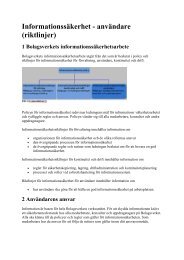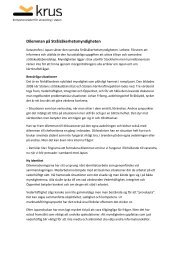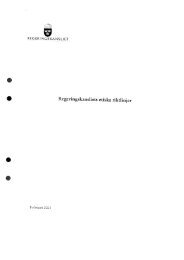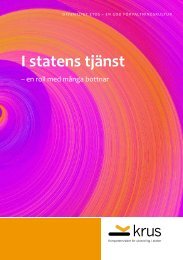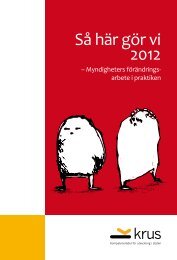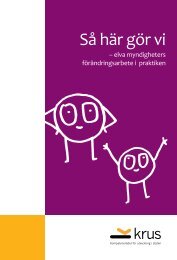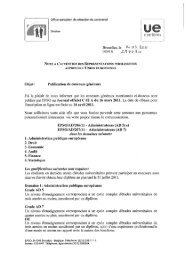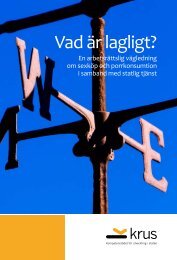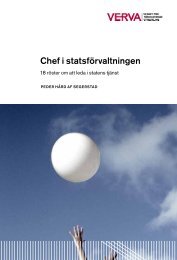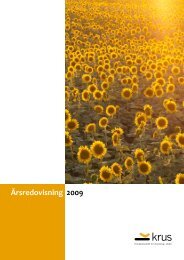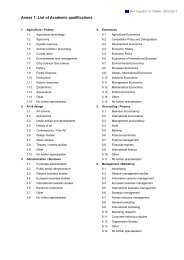Dialogkompetens i skolans vardag - Publikationer - LTU - Luleå ...
Dialogkompetens i skolans vardag - Publikationer - LTU - Luleå ...
Dialogkompetens i skolans vardag - Publikationer - LTU - Luleå ...
You also want an ePaper? Increase the reach of your titles
YUMPU automatically turns print PDFs into web optimized ePapers that Google loves.
Listening Environment in School 11<br />
I can hear everything without my hearing aids; there are only some hearing cells missing.<br />
I haven’t used my aids for two years (girl, 15).<br />
The choice of not using the hearing aid at all only appears in groups of older<br />
pupils.<br />
The Level of Noise<br />
The large number of different explanations clarify that the pupils are more<br />
dependent on a cleaned-up sound environment, and have a greater need for<br />
visual support and for conversation rules when using the hearing aids without<br />
a hearing loop. There are two aspects of the explanations about the optimal<br />
sound environment. First, there are descriptions that only show the need for<br />
silence, and secondly there are statements containing arguments about how to<br />
achieve silence. These differences might be a reflection of language development,<br />
consciousness of the pupil’s own particular needs, or a different<br />
understanding of the task.<br />
When describing the optimal environment, the pupils frequently use<br />
words like ‘‘silence’’, ‘‘calm’’, ‘‘quiet’’, ‘‘still’’, ‘‘peaceful’’, ‘‘smooth’’, etc.<br />
The word calm is often used to mean there is no unnecessary movements from<br />
peers: ‘‘My choice is this group room because there aren’t any people coming<br />
and going all the time’’ (girl, 11). With regard to acoustics, there are<br />
statements about arrangements to reduce noise. The older pupils made<br />
detailed descriptions of reducing noise, for example by using tablecloths,<br />
carpets on the floor, chairs with pads against the floor or chairs without any<br />
disturbing noise. Equipment such as computers, printers or rotating fans are<br />
mentioned as disturbing factors. The younger pupils often draw things<br />
without mentioning them in the text: tablecloths, curtains or special chairs.<br />
But this does not necessarily mean that they see such things as factors of<br />
individual needs.<br />
There also are pupils who ask for background sound, such as small talk, or<br />
different sounds that make them attentive of things that happen: ‘‘I am more<br />
relaxed when I can hear small talk in the background’’ (girl, 13).<br />
Comments<br />
In summary it appears that when using the hearing loop in a small group<br />
conversation, the preferred choice for two thirds of the pupils is for no extra<br />
technical equipment to be present in the environment. Statements about the<br />
sound from the loop being ‘‘too loud’’ reveal an absence of knowledge<br />
concerning adjustments. The level of the individual sound is connected to<br />
the hearing aid, not to the equipment in the classroom. Many experts are<br />
involved in determining the optimal listening environment in school for<br />
the user; the audio assistant is responsible for the hearing aid, the audio<br />
technician is responsible for the technical environment and the teacher is<br />
responsible for the learning environment. There is a risk however that no<br />
one takes the main responsibility for the overall listening environment for the



